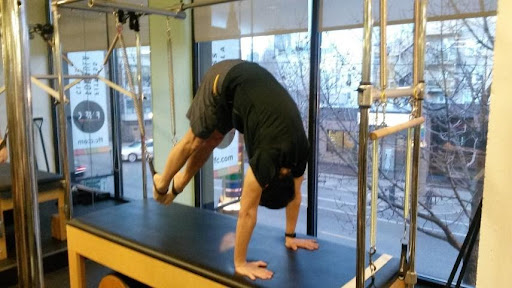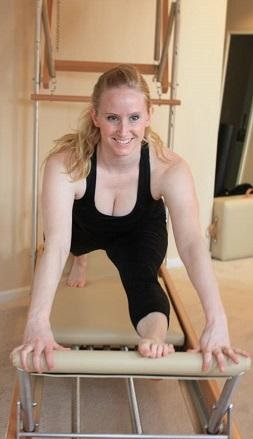Have you ever curiously walked by the Pilates studio at your club wanting to try it (or give it another shot), but stopped yourself assuming that it wasn’t for you? You aren’t alone! The growing popularity of Pilates has piqued the interest of many, however the lack of familiarity has created a lot of questions and assumptions. Here are 5 of the most common misconceptions about Pilates that we encounter at our clubs.
1. Pilates is only for females
It can be misleading when you see a lot of females doing Pilates, however Pilates was originally created by a man, for men. Before creating the craft, Joseph Pilates was a professional boxer and circus performer, and he trained Scotland Yard in self-defense. The very Pilates equipment you see in your gyms today was inspired by injured soldiers. It wasn’t until Joseph Pilates moved to New York that females, especially the nearby ballet dancers, fell in love with the practice.

Today, more men and athletes are welcoming Pilates into their weekly workout schedules. Because Pilates helps increase core strength, muscle flexibility and mobility, it has become a popular and beneficial complement to any weight training or cardio routine. With extra focus on strengthening your weak muscle groups, you will be able to increase your weight load on the strength floor to help you achieve your goals.
Related: Yes, Manly Men Do Pilates
2. Pilates is too easy
During your time at the club, you may have glanced over at the Pilates studio to see an older member performing slow movement and thought that Pilates was too easy for your taste. Or perhaps you have taken an introductory class that you didn’t really ‘get’.
To be honest, if you don’t find Pilates challenging, you are probably doing it wrong. Pilates is slowed down for better precision and activation of deeper and weaker muscle groups which can be challenging to find. Just like any other exercise routine, the more you practice Pilates, the faster, heavier, and more advanced it becomes.
Are you someone who has to sweat while working out to feel accomplished? We’ve got something for you, too. Ask about our plyometric Pilates option using the jump board!

3. Pilates is only good for your abs
This is one of the common misconceptions about Pilates that is partially true, but Pilates isn’t only good for your abdominal muscles. The main focus of Pilates is strengthening your deeper core muscles to not only assist with every day posture and comfort, but to maximize your running, biking and lifting results. However, after the basic abdominal exercises are executed properly in Pilates, it becomes a full body workout.
Whether you are continually holding up your own body weight in mat class or pushing against the spring tension on the reformer, you will leave each session feeling like you moved every muscle in your body. In fact, many times we like to challenge the brain and work on many muscle groups at one time.
For example: instead of standing still and doing bicep curls like you would on the strength floor, in Pilates I would have you perform a bicep curl on the Reformer. Beginning in a sit up position with your feet not touching the ground (teaser position), you would then perform a bicep curl with our cables while balancing on a moving Reformer. It is a lot more fun and your workout flies by quickly.
Related: What Is Pilates Good For Anyway?
4. Pilates is only for flexible people
Pilates may look intimidating, especially when you see flexible people doing acrobatic moves on the apparatus, but that can be you! Pilates is meant to work on and increase flexibility, especially for those who do not consider themselves particularly flexible. When your muscles are overly tight, they are weaker and can only perform a small range of motion.
By adding Pilates into your current workout routine, your range of motion will increase, daily muscle tension will decrease, and your muscle recovery will be minimal. In turn, this will result in improved form and ability for longer runs and increased weight load.
5. All Pilates instructors and classes are similar
You may not have fully grasped your first go around with Pilates, but I am asking you to try another class or another instructor. We are lucky at FFC to have a diverse group of trainers, and I would be happy to recommend one to you according to your goals.
No matter where you are or what your current exercise routine is, Pilates will benefit you in some way. If one of these common misconceptions about Pilates has kept you away from the studio, we encourage you to stop and say hello, take a moment to watch, or sign up for a complimentary session. We would love to have you!


Post written by FFC Pilates Instructor Jamie Loger.